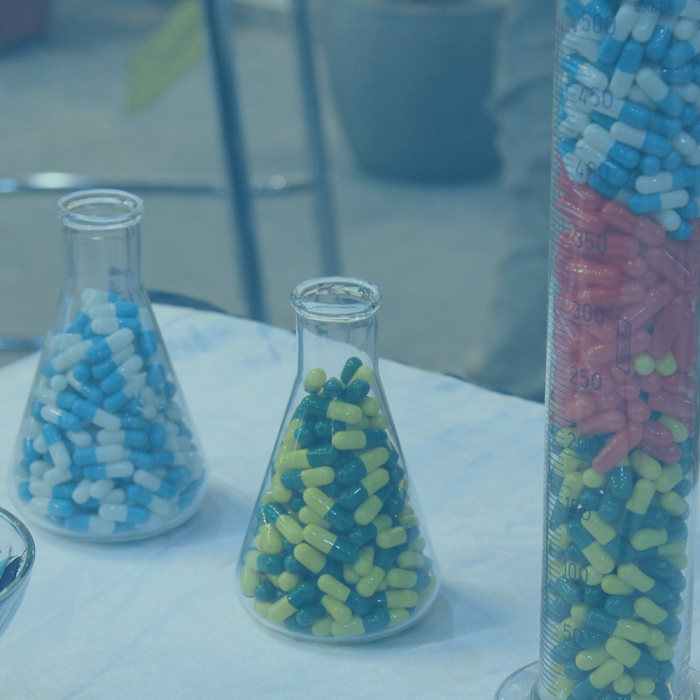

Rachmat Mauludin
Lipid nanoparticles in this case SLN (Solid Lipid Nanoparticle) is lipid particles in solid forms measuring 50 to 1000 Nm, stabilized with the addition of surfactants, phospholipids, polymers, or even the combination of the three. SLN is used as one of the modern technology delivery technologies that can be used as an alternative in addition to other conventional drug delivery technologies that have been previously introduced, such as liposomes, emulsions, microemulsions, and other polymer-based nanoparticles technology. Lipids used in SLN must be degraded in the body and not toxic or biocompatible with the body (Cambodia et al, 2010). SLN can be prepared through high-pressure cold homogenization or high pressure heat homogenization. In both techniques, solid lipids will melt and active substances dissolved or dispersed into the lipid matrix. In the method of homogenization heat, preemulsion is formed by mixing lipids that have melted with active substances and then given heat surfactants and rotated at high speed. The mixture is then encountered by putting a pressure of 200 to 500 bars and done twice or three times. Then the water nanoemulsion in oil that is still hot is cooled at temperatures under the temperature of the room until the lipless nanoparticles are formed. In the cold homogenization method, the active substance dissolved or dispersed on melted lipids then cooled quickly using liquid nitrogen or dry ice. Active substances will usually be distributed homogeneously in the lipid matrix due to fast cooling. This process is stimulated by grinding or stirring particles in the ball or mortar mill that produce lipid particles with micro size around 50 à ¢ â,¬â € œ 100 μm. This lipid microparticle is then demonstrated into the emulsifier solution. Finally, high pressure homogenization was carried out on the results of its dispersion under the temperature of the room to get lipid nanoparticles (Thassu, 2009). Other techniques that can be used to produce SLN include solvent emulsification à ¢ â,¬â € œ Evaporation, Emulsification à ¢ â,¬â € œ Diffusion techniques, and phase inversion. Lipid nanoparticles have high stability compared to liposomes and other dispersion systems. In liposomes and emulsions, active substances can diffuse and experience partitions between oil phases and water phases. Instead, the solid lipid layer minimizes the separation that occurs and prevents the degradation of active substances (Thassu, 2009). Increased surface area of lipid nanoparticles increase adhesiveness to the skin. Lipid nanoparticles also form a film that closes when applied to the skin, increases skin hydration and causes reduced corneocytes and increases skin penetration. In addition, lipids can interact with lipids on the skin and in action as penetration enhancers. Lipid nanoparticles can also be used in controlling drug release in drug formulations. Active substances Deferred through the lipid matrix and the release can be modulated by changing the composition of the lipid on the sln. Lipid nanoparticles can be used in conventional topical preparations such as lotion, cream and gel. The consistency of formula can be easily varied from a solid that easily flows, semisolid, or liquid depending on the proportion of lipid particles in the formula. Lipid nanoparticles are also composed with lipids that are compatible with the skin so that it can reduce skin irritation or sensitivity problems (Thassu, 2009). Solid lipid nanoparticles (SLN) has been introduced as a carrier in pharmaceutical and cosmetic preparations. In previous studies of SLN can act as a carrier (carrier) active compounds for solar veil preparations other than that SLN themselves can act as physical skin protectors. The addition of chemical compounds in the SLN provides synergistic activity in the protection of the skin from UV light directly. Wissing et.al. Has been investigating the influence of the Carrier of SLN to the release and absorption of oxybenzone percutaneously compared to Emulsion preparations in vivo and in vitro. The results show that the SLN itself can act as the patron of the skin physically and the potential danger of sunscreen chemical compounds can be minimized while the role of skin protection is maintained. In addition, the SLN can provide an extended release system so that it is to use the work of Oxybenzone as a sunscreen (Wissing and Mãâ € ¢ Ller, 2002).